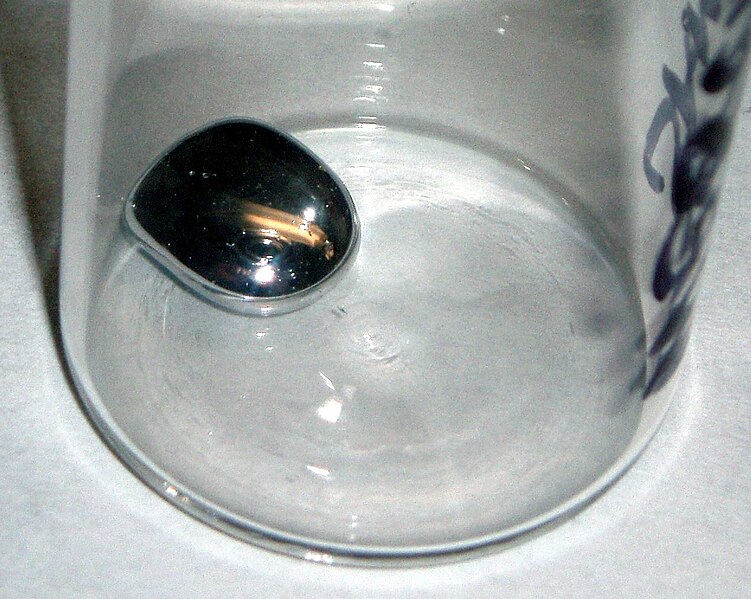The use of mercury to recover gold probably dates back to the Romans this was written about in De re Metallica by Georgius Agricola during the 16th century. In this book the recovery of gold using mercury was also described. Gold and Mercury will combine into a substance called an amalgam, and once again the gold can be separated from the mercury by the application of heat by heating the amalgam in a retort that recovers the mercury by distilling its vapor back into metallic mercury. This is a process that has been known for centuries. Using mercury in a sluice box required cleaning the riffles every few hours making it necessary to close down the sluicing operation while this was done.
 |
| A drop of mercury in a beaker. |
During the gold rush days of the 19th century large amounts of mercury were used in sluice boxes where large quantities of mercury were placed behind the ruffles in the box to catch gold particles in the black sand. In some of the larger sluice boxes the miners would use several 76 pound flasks of mercury as a gold trap. It was also very damaging to the environment causing pollution that linger. on to this day.
Although it is still used in some places the use of mercury is now frowned upon because of its damaging effects on the environment. In some jurisdictions its use is highly restricted, so that it can only be used under tight controls to prevent it from causing contamination.
 |
| Hydraulic mining in California. The sluice box is at the lower left that used mercury in the gold recovery process. |
The use of mercury for gold recovery is highly controlled in most countries although it is used by some artisanal miners in Third World Countries. In the United States Canada